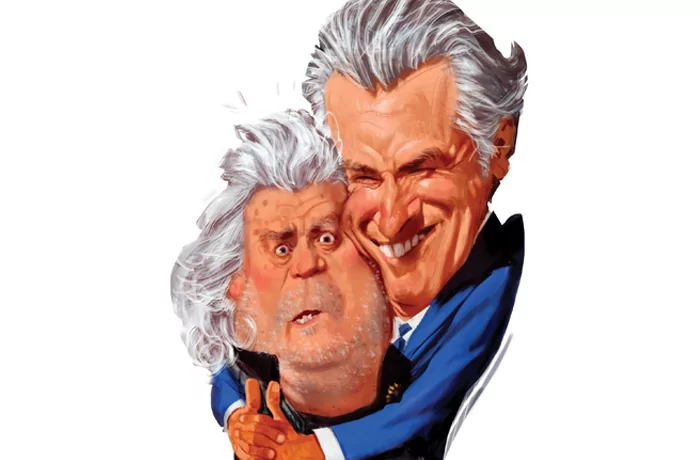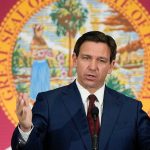Gov. Gavin Newsom (D-CA) has committed a Kinsley gaffe, and it may well cost him the White House.
Recently, Newsom has undergone cosmetic surgery for his brand. Newsom spent years presenting himself as one of the faces of the progressive movement, but President Donald Trump’s dispatching of fellow Golden State liberal Kamala Harris persuaded Newsom that to act on his well-established ambitions in 2028, he would need to ditch the unpopular agenda that doomed Harris.
Former President Joe Biden governed to the left of where he had run in 2020, when Harris had run to his left. In 2024, the country roundly rejected the Biden-Harris legacy, and Newsom, with his finger perpetually suspended in the air to discern the direction of the wind, quite rightly sensed that to make it out of the wilderness, he would have to recalibrate.
The theory is sound, but Newsom’s Kinsley gaffe, or mistaken telling of the truth, was to articulate it so ham-handedly.
In February, Newsom announced the launch of a podcast, This Is Gavin Newsom. It was a fine idea that could have conceivably helped him build the kind of personal relationship with voters that Trump did on the alternative media circuit last year.
“We need to change the conversation,” Newsom asserted. “I’m going to be talking directly with people I disagree with.” And sure enough, right-wing firebrands Charlie Kirk and Steve Bannon were among his first guests on the program.
Promises made, promises kept? Not so fast. While the voice interviewing Kirk and Bannon sounded like Newsom’s, the ideas it articulated did not.
About transgender athletes, Newsom told Kirk, “I think it’s an issue of fairness, I completely agree with you on that. It is an issue of fairness — it’s deeply unfair,” before going on to laud the Trump campaign for nailing Harris over her past support for taxpayer-funded gender transition surgeries for illegal immigrants.

“She didn’t even react to it, which was even more devastating,” he mused. “Then you had the video [of Harris] as a validator. Brutal.”
“Not one person ever in my office has ever used the word ‘Latinx,’” Newsom boasted in another attempt to Sister Souljah the far reaches of his coalition, this time over what he called an “out-of-touch fixation.”
“Where did that even — I just didn’t even know where it came from,” he continued.
The Bannon episode, meanwhile, featured quite a lot of good-natured banter with and praise for the former Trump adviser, who once bragged about running a “platform for the alt-right.”
“Steve, I really enjoyed this conversation,” Newsom told Bannon at its conclusion. “I think it’s incredibly valuable, and I appreciate the spirit to which we were able to engage. And I hope we can continue the conversation.”
“I appreciate your advocacy. I also appreciate that you call balls and strikes,” he added.
In a subsequent episode with former Democratic vice presidential nominee Tim Walz, Newsom lovingly compared Bannon to his own grandfather.
Still, nearly four years out from the next presidential election, the California governor has created three huge headaches for himself that are sure to imperil his chances of prevailing in it.
First, there is the inexorable discomfort at the sight of the post-surgery patient on whom the “after” bears no resemblance at all to the “before.”
Newsom may now wish to present as a Blue Dog, a working-class champion with neither the time for nor any interest in the far Left’s social agenda, but such an image is entirely inconsistent with the one he’s cultivated throughout his decadeslong climb to the top in California.
An early advocate of gay marriage, marijuana legalization, and other relatively popular early-21st-century progressive causes, Newsom championed the less popular ones with equal vigor until the moment he deemed them politically disadvantageous.
Consider, for example, that in 2014, Newsom celebrated the passage of the California law that first allowed biological males to participate in women’s sports; that in 2021, he offered a haughty, implicit rebuke of those on the side of sanity (the state wasn’t “going backwards on these issues”); and that in 2022, he condemned other states for “passing laws to demonize the transgender community, especially transgender youth.”
“The hate demonstrated by these laws is unfathomable,” Newsom said at the time.
The athletics issue is just the tip of the iceberg. Last year, Newsom signed a bill into law to conceal from parents when their own children socially transition at school. And while aghast at Harris’s support for the provision of gender transition treatments for illegal immigrants, he has previously taken action to provide the same for both illegal immigrants and Californian inmates.
As for the “out-of-touch” Latinx “fixation,” Newsom suffered from just such a condition for years.
“I hope we can really paint a picture in terms of our consciousness of how impactful this has been on the Latinx community,” Newsom said during an August 2020 COVID-19 briefing.
Then, in 2023, Newsom attacked Republicans for coming to the same conclusion he did a couple of years later.
“You’ve got politicians that are banning not assault rifles but the word ‘Latinx,’” the then-indignant Newsom raged. “They’re not even serious.”
The governor is right to intuit that this past iteration of himself would not fare well in a general election. Americans have moved past the lies told by elites such as Newsom in pursuit of power. But there’s no reason for them to believe that he’s renouncing them now for any reason other than that there’s power to be attained by doing so.
Second, he has now done irreparable damage to his standing with the ascendant left wing of his party.
This presents an enormous practical problem for Newsom, who will have to win a Democratic primary in which none of the truths he now feels can be said will be popular before he can benefit from his tack to the center.
Remember that while Biden eventually triumphed over his more progressive competition in the 2020 primary contest, there was a moment when self-professed socialist Bernie Sanders appeared poised to become the party’s new standard-bearer. It was only the COVID-19 crisis and the collective decision of the also-rans all suddenly to throw their weight behind Biden that prevented such an eventuality.
Moreover, there’s a reason that Biden more closely resembled Sanders than the version of himself who ran for president in, say, 2008, once he took the oath of office. The activist wing of the party with the most pull in academia, Hollywood, and the media demanded it.
After all, central to these elite Democrats’ self-conception is the idea that they are constantly pushing the country forward, one novel, righteous idea at a time. For that reason, they’re unlikely to take well to one of their own suddenly breaking off from their ranks to undermine the premises upon which some of their most closely held ideas (radical gender theory) and the language they’ve created to communicate them (Latinx) are built.
Moreover, while it’s true that some historically Democratic constituencies, including Latino and black people, might resent these ideas, those demographics are already moving to the right as the party increasingly becomes reliant on well-to-do, college-educated white people living in major cities and their suburbs. In other words, the exact group most wedded to the social program Newsom has turned his back on.
Certainly, Newsom could have pivoted to the center in a way that wouldn’t have been so confrontational, or even offensive, to his own primary voters. But that’s not the path he’s chosen. Instead, he chose to mock that which he had once preached — and alongside the enemy, no less.
Polling shows that a plurality of Democrats, who stand to the right of Democratic primary voters, believe the party ought to moderate. But a much larger majority, 81%, of this more moderate group believe the party should be “more combative against Donald Trump than they are now.” Can Newsom not anticipate the devastating impact that the clips of him chumming it up with Kirk and Bannon will have a couple of years from now?
Third, Newsom’s rebrand plays directly into his core weakness as a candidate.
There’s no disputing that Newsom is a smooth operator with a talent for repartee. As a career politician who has long had his eye on the Oval Office, Newsom walks into interviews, debates, and other events not just prepared but eager to bite, kick, scratch, and claw to defend himself. He’s rarely caught flat-footed, even, and perhaps especially, when he’s at a disadvantage — as he was when his state’s dismal condition was compared with Florida’s exemplary one during a Fox News debate with Gov. Ron DeSantis in 2023.
The drawback to this indisputable strength is that Newsom’s polish, in conjunction with his poor record, gives voters the impression that he’s a slick, craven salesman better equipped to campaign than to govern.
It’s hard to see how his brazen flip-flops won’t reinforce this impression among voters of all stripes, especially if he ends up feeling compelled to reverse himself again to appease his left flank.
DEMOCRATS REJECT NEWSOM’S ATTEMPTS TO DISTANCE FROM THE PARTY’S UNPOPULARITY
That Newsom has launched headfirst into this new approach without much thought as to the downsides is a testament to just how much the country has changed over the last few years. For decades, progressives seemed to hold all the cards in just about every culture war battle. In 2024, Americans at last stood athwart this leftward march, yelling “Stop!” so clearly that it compelled the governor to take decisive action to answer it.
But in his attempt to rescue his party from the no-man’s-land it finds itself occupying — indeed, the very ground he helped lead it to — he’s only managed to advance further into it himself.
Isaac Schorr is a staff writer at Mediaite and a Robert Novak fellow at the Fund for American Studies.























